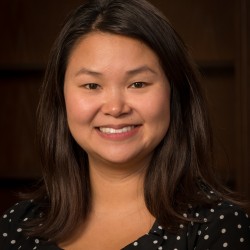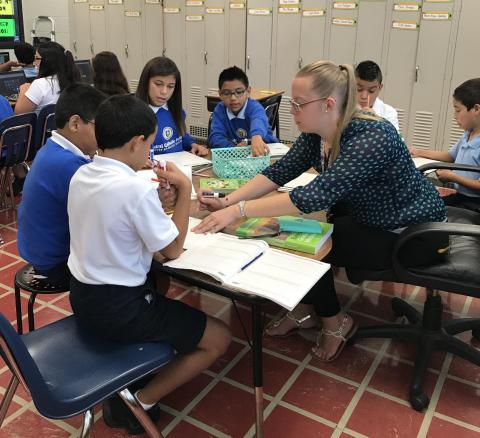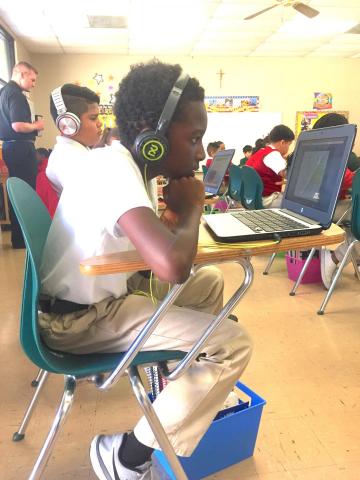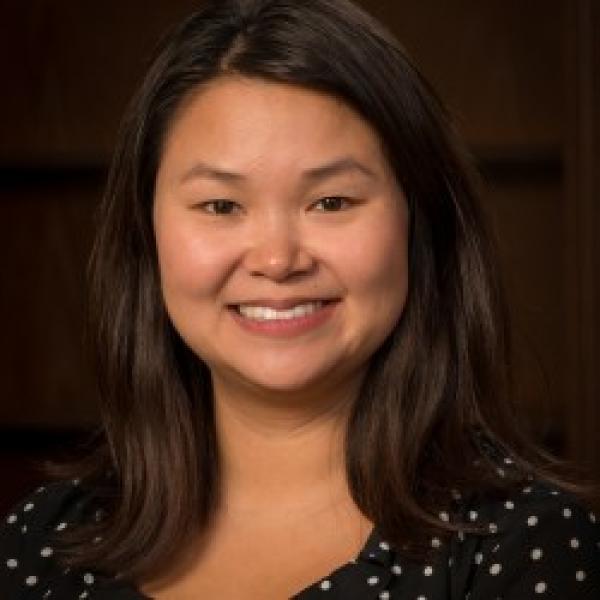Teen Tech Week // Blended Learning & Literacy in Middle School

Francesca Varga is the Associate Program Director of Blended Learning for the Higher-Powered Learning team at the Alliance for Catholic Education. Francesca came to ACE after nine years in public schools, where she served as an English teacher, instructional coach, and team leader. She focused her practice on serving at-risk and underrepresented populations of students. Francesca earned her undergraduate degree from the University of Notre Dame in English and her teaching license from Saint Mary's College. She earned her Masters of Education in Curriculum and Design from Indiana Wesleyan University and completed the coursework towards her Administrative license through Ball State University.
Welcome to middle school: the awkward in-between stage where students are not bright-eyed little ones anymore, but they are not quite independent learners yet either. Middle schoolers often need a bit of a push to “buy-in” to instruction, but when the connection happens, it is like magic. Earlier this week, we talked about blended learning and what it looks like in an elementary classroom. Although some of the same practices can successfully occur in the middle school blended classroom, teaching and learning looks quite a bit different in this distinct context.
In the same way that you might walk into a blended elementary classroom and not immediately know it was blended, you could literally teach a blended middle school class and never actually realize you were doing blended learning (like me!). Although some middle school teachers use the station rotation model with great success, others choose to blend in other ways. It is important to note that station/rotations are not the goal of blended learning, but rather one pathway of many to achieve student success.

A Blended, Middle School, Language Arts Classroom
A typical blended, middle school, Language Arts class begins and ends with a whole-group mini-lesson, but students typically spend the majority of their time in class working in small groups, with a partner, or individually on different activities that break down the skill or standard of the day.
Because the classroom layout in a middle school blended class can look so much like a traditional classroom, it is hard to tell at a glance that the class is blended. Remember, the physical layout is NOT what makes a classroom blended; rather, it is the combination of adaptive software programs and the teacher using the data to differentiate instruction and meet students at their level that classifies a classroom as blended.
Middle school students want to be treated as “big kids” and can push back if the classroom and/or teaching practices seem “babyish.” I found that my students tended to give more push back with a station/rotation model. This discovery led me to adapt my teaching to incorporate blended learning into daily instruction, but keep my classroom aesthetics more “big kid” with traditional middle school physical layout.
Instead of using formal stations or rotations, middle school teachers often pull small groups of students for personalized instruction while the rest of the class works on online or offline learning activities. These small groups offer great opportunities for differentiation, particularly for students needing extra help. Because middle school students are sensitive to their peers’ opinions of them, pulling different combinations of students regularly (depending on the topic or skill at hand) is a strategy that typically yields results. Not only does it allow the teacher to deliver instruction at students’ “just-right” level, but it also prevents students from being singled out by their skill level.

Software Programs
The software programs made for middle school students are different than the programs made for elementary students. While many elementary-level programs explicitly teach foundational skills, many middle school programs work on applying the learned skills.
 One of our favorite middle school ELA programs is ThinkCERCA, which develops students’ skills in argumentative writing and reading informational texts through multistep reading and writing lessons. It teaches students how to make Claims, support their claims with Evidence, explain their Reasoning, address Counterarguments, and use Audience-appropriate language.
One of our favorite middle school ELA programs is ThinkCERCA, which develops students’ skills in argumentative writing and reading informational texts through multistep reading and writing lessons. It teaches students how to make Claims, support their claims with Evidence, explain their Reasoning, address Counterarguments, and use Audience-appropriate language.
Other programs like Newsela allow students to read text at their “just-right” level. This program differentiates the same article and skill for students further supporting literacy in the middle school classroom. Although there are countless resources available to use, these are a few of our favorite programs that illustrate the benefits of using blended learning in the middle school Language Arts classroom.
Learning More
This is just a small snapshot of blended learning in the middle school Language Arts classroom, but we would love to help you learn more! Check out these blog posts if you’re eager for more information:
- Should Data Really Drive Your Instruction?
- The “Why” Behind Your Blended Learning Program
- Protecting Purpose in the Blended Classroom
Before you go – don't forget to subscribe to the Higher-Powered Learning blog!
Happy Reading (and Blended Learning!),
Francesca
